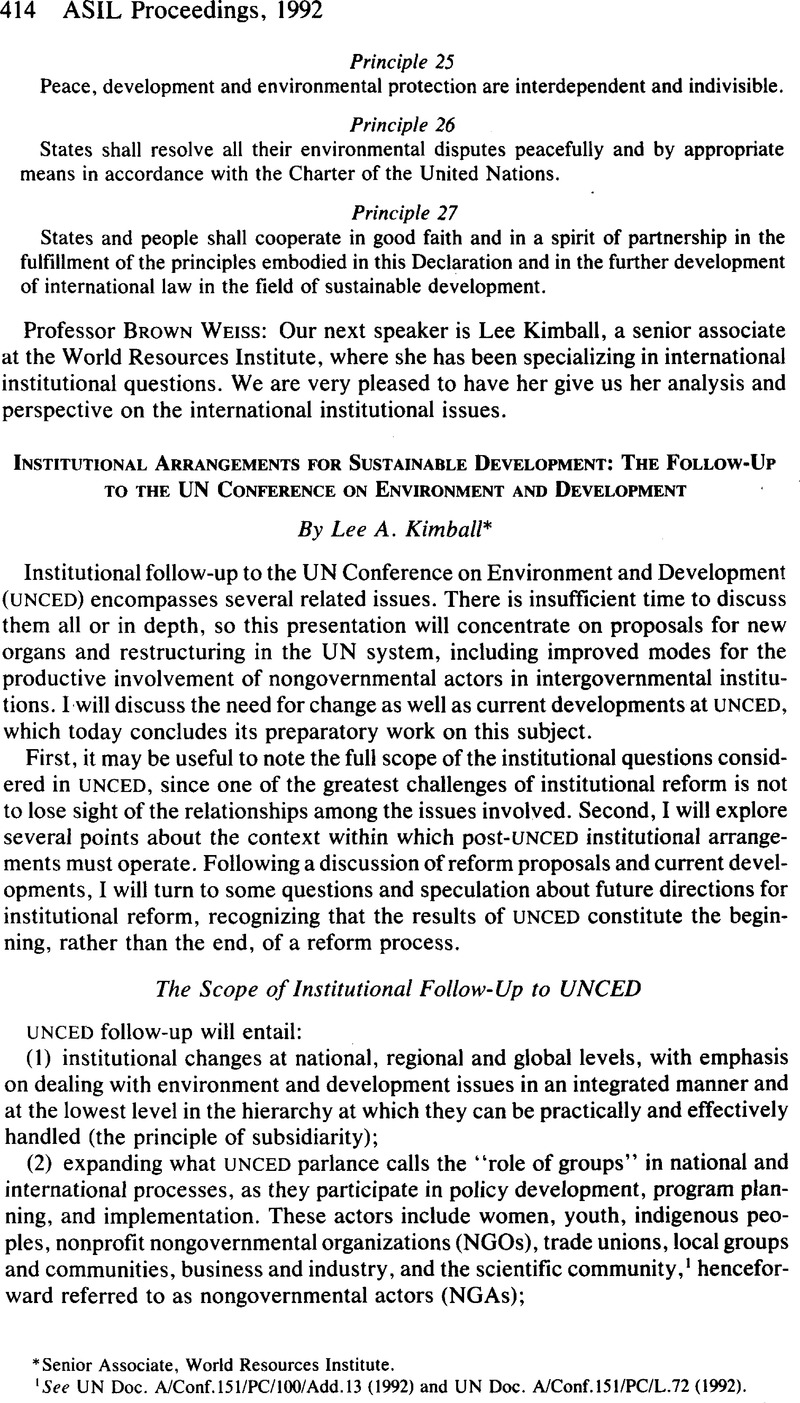No CrossRef data available.
Article contents
Institutional Arrangements for Sustainable Development: The Follow-Up to the UN Conference on Environment and Development
Published online by Cambridge University Press: 28 February 2017
Abstract

- Type
- Issues Relating to the 1992 Brazil Conference on the Environment
- Information
- Copyright
- Copyright © American Society of International Law 1988
References
1 See UN Doc. A/Conf.l51/PC/100/Add.l3 (1992) and UN Doc. A/Conf.l51/PC/L.72 (1992).
2 A New U.N. Structure for Global Economic Cooperation: Report of the Group of Experts on the Structure of the U.N. System, UN Doc. E/AC.62/9 (1975); and Report of the Group of High-Level Intergovernmental Experts to Review the Efficiency of the Administrative and Financial Functioning of the United Nations, UN Doc. A/41/49 (1986).
3 On February 7, 1992, Secretary-General Boutros-Ghali announced a restructuring of the UN Secretariat under eight undersecretaries-general. He consolidated several offices and reduced the number of high-level posts by fourteen. He also made clear that a second stage of reform would follow. In the economic and social area, the new Undersecretary-General of Economic and Social Development, Ji Chaozhu of China, is now responsible for the office of the Director-General for Development and International Economic Cooperation, the Department of International Economic and Social Affairs, the Department of Technical Cooperation for Development, the Centre for Science and Technology for Development and the Centre on Transnational Corporations.
4 The review of the complementarity of the roles of ECOSOC and the General Assembly was called for in GA Res. 45/264 (13 May 1991).
5 Current rules are contained in ESC Res. 1296, UN Doc. E/4548 (1968).


